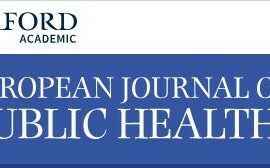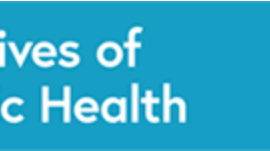
Alicia Padron-Monedero, Rodrigo Sarmiento Suárez, Petronille Bogaert, Linda Abboud, Herman Van Oyen, Hanna Tolonen, Mariken J. Tijhuis, Luigi Palmieri, Romana Haneef, Anne Gallay, Luis Lapao, Paulo Jorge Nogueira, Thomas Ziese, Stefanie Seeling, Jakov Vukovic & Isabel Noguer-Zambrano
Archives of Public Health, Volume 80, Article number: 29 (2022)
Abstract
Background
Non-Communicable diseases (NCD) are the main contributors to mortality and burden of disease. There is no infrastructure in Europe that could provide health information (HI) on Public Health monitoring and Health Systems Performance (HSP) for research and evidence-informed decision-making. Moreover, there was no EU and European Economic Area Member States (EU/EEA MSs) general consensus, on developing this initiative and guarantee its sustainability. The aim of this study is to analyze the integration of technical and political views made by the Joint Action on Health Information (InfAct; Information for Action) and the results obtained from those activities, in terms of advice and national and institutional support to develop an integrated and sustainable European Distributed Infrastructure on Population Health (DIPoH) for research and evidence-informed policy-making.
Methods
InfAct established two main boards, the Technical Dialogues (TDs) and the Assembly of Members (AoM), to provide a platform for discussion with EU/EEA MSs to establish a sustainable infrastructure for HI: 1) The TDs were composed by national technical experts (NTE) with the aim to discuss and provide feedback about scientific aspects, feasibility and EU-added value of the infrastructure proposed by InfAct. 2) The AoM gathered country representatives from Ministries of Health and Research at the highest political level, with the aim of providing policy-oriented advice for the future political acceptance, support, implementation, and development of InfAct’s outcomes including DIPoH.
The documentation provided for the meetings consisted in Fact-Sheets, where the main results, new methods and proposals were clearly exposed for discussion and assessment; altogether with more extended information of the DIPoH. The documentation was provided to national representatives within one more before each TD and AoM meeting.
The Agenda and methodological approaches for each TD and AoM meeting consisted in the presentations of the InfAct outcomes extending the information provided in the Fact-Sheets; followed by a non-structured interaction, exchange of information, discussion and suggestions by the MSs representatives.
The outcomes of the non-structured discussions were collected in Minutes of the TD and AoM meetings, and the final version was obtained with the consensus of all participants. Additionally, structured letters of political support were provided to the AoM representatives, for them to consider providing their MS written support for DIPoH.
Results
NTE, within the TDs, considered that DIPoH was useful for technical mutual learning and cooperation among and within countries; although they considered that the technical feasibility to uptake InfAct deliverables at the national and EU level was complex. The AoM focused on political support, resources, and expected MSs returns. The AoM representatives agreed in the interest of setting up an integrated and sustainable HI infrastructure and they considered DIPoH to be well-articulated and defined; although, some of them, expressed some barriers for providing DIPoH political support. The AoM representatives stated that the AoM is the most suitable way to inform EU MSs/ACs about future advances of DIPoH. Both boards provided valuable feedback to develop this infrastructure. Eleven countries and sixteen institutions supported the proposal, either by letters of political support or by signing the Memorandum of Understandings (MoU) and three countries, additionally, provided expression of financial commitment, for DIPoH to be added to the ESFRI 2021 roadmap.
Conclusions
TDs and AoM were key forums to develop, advise, advocate and provide support for a sustainable European research infrastructure for Population Health.


